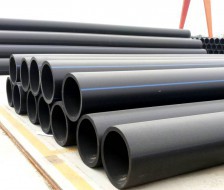

The use of models provides us with more basic choices, and we can choose the more suitable model for the PE pipes we use. And now there are regulations on the length and thickness of PE pipes required in different fields. If they are not used properly, it will affect the transportation effect in the future.
PE is polyethylene plastic, a relatively basic type of plastic. Plastic bags, cling films, etc. are all made of PE, while HDPE is a highly crystalline and non-polar thermoplastic resin. The original appearance of HDPE is milky white, with a certain degree of semi transparency in the thin section. PE has excellent resistance to most household and industrial chemicals.
PE pipes include medium density polyethylene pipes and high-density polyethylene pipes. And it is divided into SDR11 and SDR17.6 series according to wall thickness. The former is suitable for transporting artificial gas, natural gas, and liquefied petroleum gas in gaseous form, while the latter is mainly used for transporting natural gas. Compared with steel pipes, the construction process is simple, has a certain degree of flexibility, and most importantly, does not require anti-corrosion treatment, which will save a lot of processes. The disadvantage is that the equipment is not as good as steel pipes. During construction, special attention should be paid to the safety distance of thermal heating, and it should not be exposed to the air and sunlight. It is also sensitive to chemicals to prevent damage caused by leakage of sewage pipes.
Therefore, the National Bureau of Standards has made a lot of revisions in the new standard GB/T13663-2000, stipulating that different grades of PE80 and PE100 for water supply pipes correspond to different pressure strengths, and removing the tensile strength performance in the old standard, and increasing the elongation at break (greater than 350%), emphasizing basic toughness.
So according to the diameter of PE pipes, they can be roughly divided into: 20, 25, 32, 40, 50, 63, 75, 90, 101, 251, 60, 180, 200, 252, 502, 803, 153, 55, 400, 450, 500, 560, 630, 710, 800, 900, 1000, 1200, all in millimeters. The diameter of PE pipes refers to the outer diameter, and the wall thickness of the pipes varies depending on the pressure level. In China's municipal pipe market, water supply pipes and gas pipes are two major application markets. The Chinese name for PE chemistry is polyethylene. PE material is widely used in the field of water supply and drainage manufacturing due to its high strength, high temperature resistance, corrosion resistance, non toxicity, and wear resistance. Because it does not rust, it is an ideal pipe material to replace ordinary iron water supply pipes.
The welding of PE pipes, PE pipe butt welds, provides high reliability and a range of diameters and pressure processes: heating the end of the pipe using a tool called "mirror" defined by contact pressure and temperature. The end is quickly contacted and kept under pressure during the cooling process.
The main difference in models is the diameter and wall thickness of the PE pipe used, so when choosing a product, you should use these two pieces of information as a basis to avoid some difficulties in selection.
